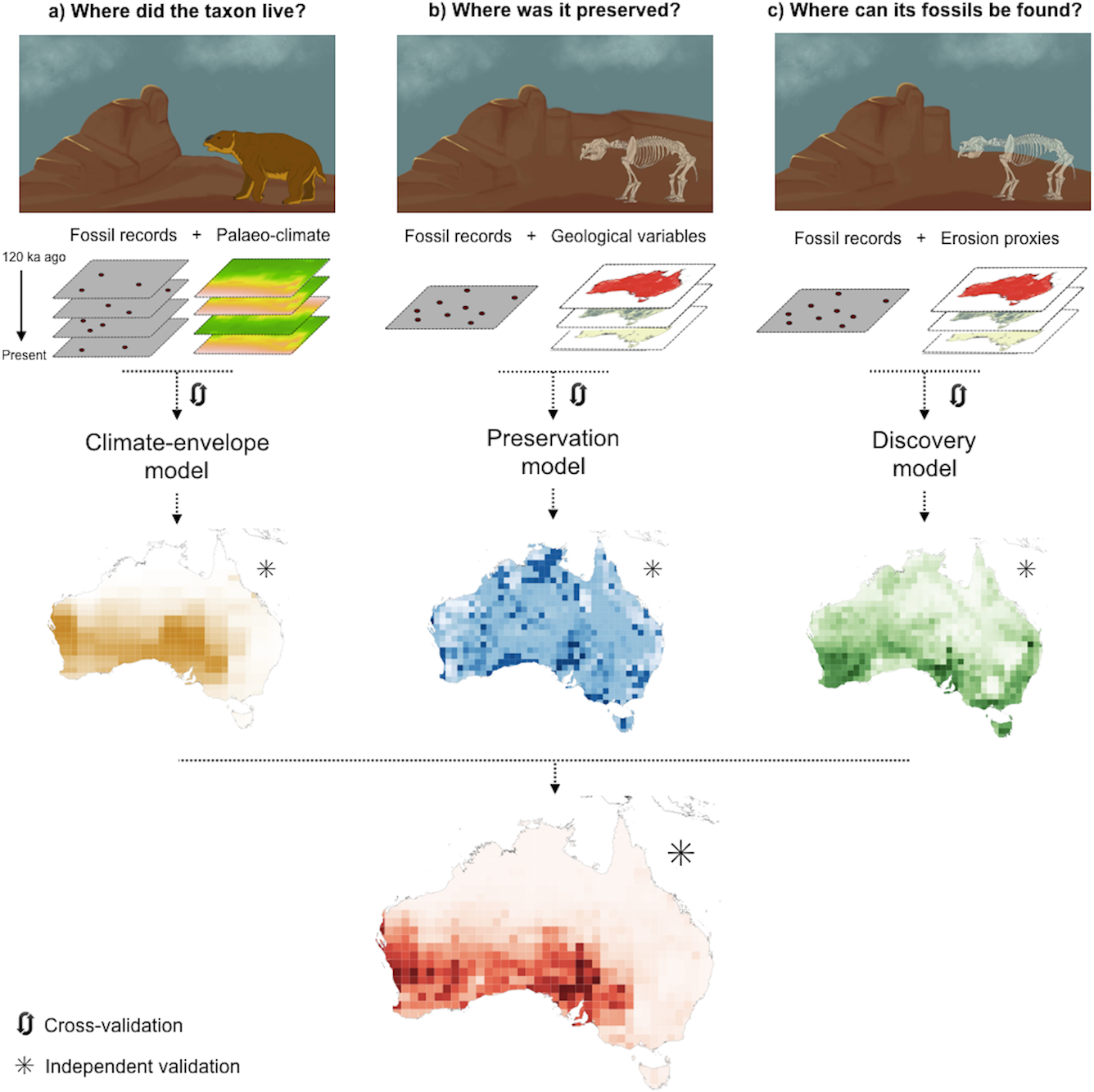Fossils are exceptionally valuable for our understanding of the history of life. They are also extremely rare and difficult to find. For my M.Sc. thesis, I combined climate-envelope, taphonomy, and discovery models to identify potential fossil areas of Late Pleistocene Australian megafauna.
The idea is that for a place to have fossils of a given species, the species must have lived there before dying and becoming fossilized. Thus, by modeling the potential distribution of the species based on paleoclimate and fossil presence data, we can get a first idea of where to look for its fossils.
But within the distribution of a species, only a few organisms will be fossilized, and only a few fossils will ever be found. By modeling the probability of fossil preservation and discovery as a function of environmental variables, and combining the predictions with those of the climate-envelope model, we can detect the best areas to look for fossils of the species of interest.
Media coverage
- Blog post in Everything Dinosour
- Blog post in Conservation Bytes
- Press release from the University of Adelaide
- Article in the Unizeit, newspaper of the University of Kiel (in German)
